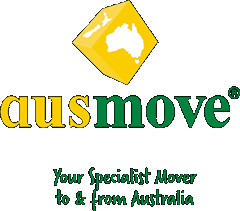Moving your pet to a new country requires certification and paperwork. Once done, you are faced with the challenge of helping them settle in. Here is how you can do it all with the least disruption to your furry best mate.
Moving internationally is quite the task for the family. There is a lot that changes and you need time to get everyone and everything settled down. If you have a family pet and want to take them with you, then you have another important element added to your to-do list – transporting your pet to the new country and helping them adjust. Because having your furry family member is important to help the whole family feel at home and happy.
Moving pets to Australia is simple for Kiwis, in the sense that you will not need to quarantine them on arrival. However, it can be expensive. You will be looking at approximately $800 for a cat and around $1000-$2500 for a dog. The added advantage for pets coming from New Zealand to Australia is that you don’t need a permit for them. It is worth the cost and extra work to have them join you in Australia- your family is not complete without them.
Eligibility of your pet for the trans-Tasman move
Before you even begin working on the transporting process, you have to know if your pet is eligible for transport to Australia. This means that:
- Your pet will have to be a resident of New Zealand all its life or have been brought into New Zealand from Australia.
- Your pet should not be quarantined for any reason before transporting.
- Your pet should not be over 40 days pregnant or nursing offspring during transporting.
- Your pet has to be at least 8 weeks old at the time of transport.
- Your pet has to be micro-chipped (numbers starting with 999 are not accepted).
- Certain breeds of cats and dogs are not acceptable for transport. Check with your local authorities on this.
Before you begin the transportation process
While you don’t need a permit, there are certain conditions that your pet will need to comply with. All pets must have health a certification. If it is found that they do not, then your pet will be held in quarantine on arrival, may have to undergo additional testing, and could be sent away or euthanised. All this will be at your expense. It is essential that you don’t let the pet or the family undergo any trauma by trying to find shortcuts. A registered veterinarian in New Zealand will help you with all the requirements.
The New Zealand Ministry for Primary Industries will be able to help you with a list of veterinarians and laboratories that will help with the certification of your pet for transport. Any requirements from the New Zealand, as part of the process, will also be explained on the site. Take all of this information and head to your registered veterinarian as well as pet transporter to understand all that is required of you.
To begin the process you will need to:
- Ensure your dog or cat is micro-chipped
- Ensure that your pet meets all of the Overseas Market Access Requirements for Australia
- Utilise the services of a pet exporter
- Have all necessary documentation ready
- Check on any paperwork that needs to be done
- Have a certificate from a registered veterinarian stating readiness for transportation
- Ensure the animal is up to date with all required vaccines
The health certificate
When your pet is ready for transport, it should have a health certificate that is signed by a registered veterinarian. It should be in its original form as no duplicates will be accepted. It should state:
- That the animal is identifiable with a micro-chip
- That New Zealand is rabies-free
- That the pet has been examined a maximum of five days before transport and is certified fit to travel.
- That the pet has been treated for parasites, internal and external within a five day time frame from transportation.
- In the case of dogs, a few additional requirements are needed on the certification
- Certification that certain dog related ailments have not been recorded in New Zealand a year before your transport date.
- That the dog has always been in New Zealand from birth or directly transported from Australia. If not, there are certain tests to be conducted and the results included.
Travel to Australia
It is best to use the services of a pet transporter to help you with the process from here onwards. There are no restrictions on the airlines used to transport your pet, but they will have to go into cargo and will not be allowed to travel in the cabin. Only assistance dogs are allowed to travel in the cabin, with prior clearance. The crates for transportation have to be IATA approved standards.
On arrival, have all documents necessary ready for scrutiny. These documents have to travel along with the pet as well and will be checked at the first port of entry. The relevant department in Australia will have to be notified via email three days before the arrival of the pet in the country. Your documents will be checked by a bio-security offices and only when everything is found to be in order, will the pet be released into your custody.
Helping your pet adjust to the move
Just like it takes a while for you to adjust to a massive international move, your pet will need some adjustment time as well. Here is what you can do to help ease the process for your pet.
Don’t pack in front of them: Pets are extremely sensitive and know immediately that things are going to change when they see you packing. Cats especially don’t appreciate things moving around or going missing in their homes and can get stressed. When packing, move your pet to a single room in the house that you can pack up last, or to a friend’s home or a kennel for a day. Make sure to pack your pet’s things last so you have them first to hand on arrival.
Prep them for travel: Introduce your pet to the crate that they will be travelling in advance. Don’t force them into it, rather give them time to explore, sniff and make their way to it. Place their favourite blanket, toy, food and water in and around the crate to help them get familiar with it. This will reduce trauma on the day that they are actually placed in it for transport.
Have their favourite things in an overnight bag: Have your pet’s favourite food and toys ready in a bag for when you arrive. Give it to them if they seem agitated and it will help them relax. In your new home, it will also be something familiar that keeps them grounded and reduces the chance of them being a flight risk.
Keep them isolated for a while: When setting up the new home, keep them isolated in a room with things familiar to them. Place litter or newspaper around the room, bring in their favourite things and also a piece of furniture which they are familiar with. This helps them adjust. Keep checking on them regularly.
Help them familiarise: Take your dog and cat on a leash around the neighbourhood to familiarise them with their surroundings. Stick to their regular routines of food and outdoor time. If you have an indoor-outdoor cat, the leash is a good idea so that they don’t flee in fright. A few days on it and some time outside will help them settle down.
These are the steps you should take and work with to transport your pet from New Zealand to Australia. With careful planning and care, your pets will make the transition smoothly and come to love their new home as much as you do.




